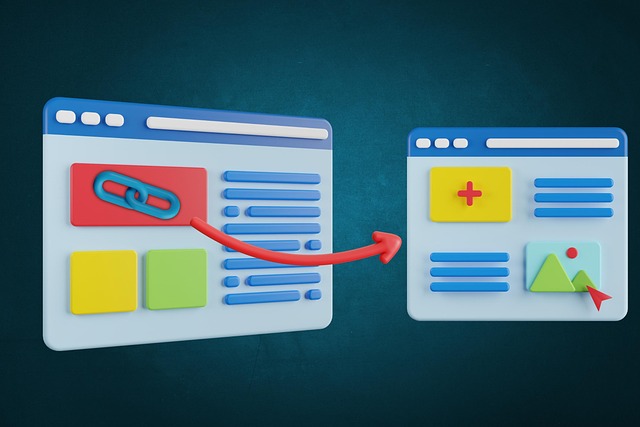The SEO internal links tool optimizes website architecture, enhances search engine visibility, and guides users. It offers insights for improving underperforming pages and content gaps, enabling strategic linking for better rankings and traffic. These tools simplify link management, help search engines understand site hierarchy, and enhance user experience through automated suggestions and analysis. Choosing the right software with intuitive interfaces, automatic links, content analysis, and visual sitemaps is crucial. Implementing a balanced internal linking strategy signals relevance to search engines and improves click-through rates. Regular analytics and adjustments based on engagement metrics fine-tune SEO strategies for optimal site performance.
“Uncover the power of SEO internal links and elevate your website’s performance! This beginner’s guide offers a comprehensive journey through the essential elements of effective internal linking. From understanding the basic concept to implementing advanced strategies, we’ll explore the benefits of utilizing an SEO internal links tool. Learn how to choose the right software, craft a winning strategy, measure success with analytics, and optimize for maximum impact. Get ready to harness the potential of your site’s internal connections.”
- Understanding SEO Internal Links Tool
- Benefits of Using an Internal Linking Tool
- Choosing the Right Internal Linking Software
- Implementing Effective Internal Links Strategy
- Measuring Success with Internal Link Analytics
- Best Practices for Optimizing Internal Links
Understanding SEO Internal Links Tool

The SEO internal links tool is a powerful asset for any website owner or digital marketer looking to enhance their site’s search engine optimization (SEO). It acts as a roadmap, helping users navigate and understand the intricate web of internal links within their site. By utilizing this tool, beginners can gain valuable insights into how search engines crawl and index pages, which is essential for implementing an effective SEO internal links strategy.
It offers practical SEO internal links tips to improve website architecture and user experience. Through its intuitive interface, users can identify underperforming pages, redundant content, and missed opportunities for internal linking. By strategically placing relevant backlinks within the content, websites can improve their visibility and relevance in search engine results, ultimately boosting organic traffic and search rankings.
Benefits of Using an Internal Linking Tool

Using an SEO internal links tool can significantly enhance your website’s performance and user experience. These tools streamline the process of creating and managing internal links, which are vital for improving search engine optimization (SEO). By strategically placing relevant backlinks within your content, you can guide users to valuable resources while also helping search engines understand your site’s hierarchy and relevance.
An SEO internal links tutorial or SEO internal links tips can teach you how to leverage these tools effectively. They simplify complex tasks like link analysis, keyword-rich anchor text generation, and automated linking suggestions. This not only saves time but also ensures your internal links are optimized for both users and search engines. Ultimately, a well-structured internal linking strategy contributes to better site navigation, increased user engagement, and improved search engine rankings.
Choosing the Right Internal Linking Software

When it comes to implementing an effective SEO internal links strategy, selecting the right software is a crucial first step. Beginners should look for user-friendly tools that offer intuitive interfaces, making it easy to navigate and optimize their site’s internal linking structure. A top-tier SEO internal links tool provides features like automatic link suggestions, content analysis, and visual sitemaps, which streamline the optimization process. These tools often include SEO internal links tips and strategies built into their platforms, guiding users on best practices and helping them create a robust linking architecture.
Additionally, these software solutions can offer valuable insights into keyword targeting and anchor text diversification, two key aspects of SEO internal links optimization. By leveraging such tools, beginners can ensure their internal linking efforts align with current SEO best practices. Start by evaluating various options based on these criteria to find the perfect SEO internal links strategy fit for your website.
Implementing Effective Internal Links Strategy

Implementing an effective internal linking strategy is a crucial aspect of any SEO internal links tool or tutorial. It involves intelligently connecting relevant pages within your website to enhance user experience and boost search engine rankings. A well-crafted SEO internal links strategy should aim to create a natural flow of links that guide users and search engines through your site’s information architecture. One important tip is to use anchor text wisely; descriptive, keyword-rich anchors improve click-through rates and signal to search engines the relevance between pages.
When planning your SEO internal links, consider the context in which links are placed. Strategically position them within valuable content to support its meaning rather than as mere distractions. Prioritize linking to high-quality, authoritative pages within your site, as this demonstrates confidence in your own content. Remember, an SEO internal links tutorial should guide you on creating a balanced link profile that avoids excessive or spammy linking practices.
Measuring Success with Internal Link Analytics

Measuring success with internal link analytics is a crucial step for any beginner looking to optimize their site’s SEO. Using an SEO internal links tool can provide valuable insights into how your internal linking strategy is performing. These tools track click-through rates, time on page, and bounce rates for linked pages, helping you identify which content is resonating with your audience and which needs improvement. By analyzing these metrics, you can fine-tune your SEO internal links tips and strategies, ensuring that each link points to relevant, engaging content that drives user interaction and boosts search engine rankings.
Beyond basic analytics, focusing on keyword-rich anchor text and strategic placement of internal links is essential for SEO internal links optimization. This involves using relevant keywords in your link text to signal to search engines the topic of the linked page. Additionally, distributing internal links evenly across your site’s content ensures a seamless user experience, encouraging visitors to explore more pages and increasing the potential for conversions. Regularly reviewing and updating your SEO internal links strategy based on these factors will contribute significantly to the overall health and visibility of your website in search engine results.
Best Practices for Optimizing Internal Links

When implementing SEO internal links within your website, best practices involve a strategic approach that balances user experience with search engine optimization. Begin by identifying relevant content throughout your site using an SEO internal links tool. This allows you to uncover valuable pages and topics that deserve more attention. Subsequently, integrate these tools into your SEO internal links strategy by naturally linking related content within the context of each page.
Focus on creating a SEO internal links optimization that enhances user journey rather than manipulates search engines. Utilize anchor text strategically, ensuring it accurately represents the linked page’s content. Avoid keyword stuffing and over-optimizing; instead, aim for a balanced SEO internal links tips that encourages users to explore more of your site while improving its overall authority in search engine rankings.
